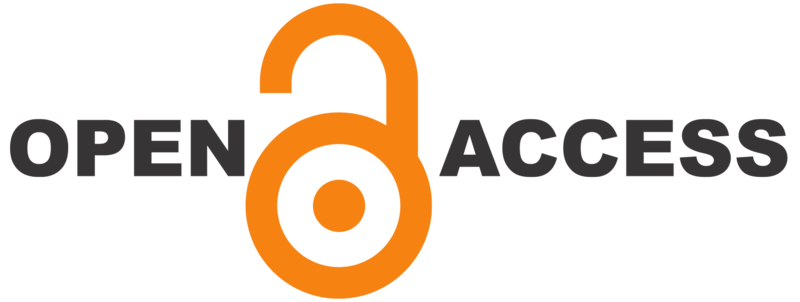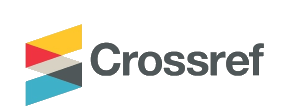Perceived professional identity formation and influencing characteristics among speech pathology students
DOI:
https://doi.org/10.21153/jtlge2025vol16no1art2093Keywords:
professional identity formation, speech pathology, perceived employability, higher educationAbstract
While professional identity formation (PIF) is an important facet of employability and becoming a health professional, there has been little research on PIF among speech pathology (SP) students. This single group, cross-sectional study explored perceived PIF among SP students at a large, urban, Australian university selected via stratified sampling from a four-year undergraduate program. Using an established online self-assessment tool to measure perceived employability, the study reports on seven related constructs relevant to PIF. The self-assessment has previously been found to have strong validity and reliability and the subset used in this study likewise had strong validity and reliability. There were 84 participants and the PIF constructs were: self and program awareness (SPA); identification with commitment (IC); reconsideration of commitment (RC); self-esteem (SE); perceived program relevance (PPR); career exploration and awareness (CEA); and ethical and responsible behaviour (ERB). Descriptive and multivariate statistics were used to estimate the proportion of variance for year level and individual characteristics for each construct and overall PIF. Perceived professional identity increased from first to fourth year, significant only for SPA, IC and PPR constructs. Students aged over 25 years self-rated significantly higher on ERB than younger students, as did students studying part-time compared to those studying full-time. Participants not engaged in paid work had significantly higher SE than those who were working, as did students from low socio-economic status (SES) compared with medium or high SES students. No differences were found for other individual characteristics, although some group sizes were very small. Recommendations to enhance PIF include incorporating a range of reflective activities, assertiveness training and opportunities to explore ethical dilemmas within the curriculum.
Metrics
References
ACEN (2023). Student participation in work integrated learning in higher education – A three-year review. Australian Collaborative Education Network. https://acen.edu.au/wp-content/uploads/2024/01/Student-participation-in-Work-Integrated-Learning-in-Higher-Education-edited-1.pdf
Allen, P., Bennett, K., & Heritage, B. (2014). SPSS statistics version 22: A practical guide. Cengage Learning Australia.
Ananthram, S., Bawa, S., Bennett, D., & Gill, C. (2024). Perceived employability and career readiness among STEM students: Does gender matter? Higher Education Research & Development, 43(2), 267–283. https://doi.org/10.1080/07294360.2023.2240710
Andersson, H., Svensson, A., Frank, C., Rantala, A., Holmberg, M., & Bremer, A. (2022). Ethics education to support ethical competence learning in healthcare: An integrative systematic review. BMC medical ethics, 23(1), 29. https://doi.org/10.1186/s12910-022-00766-z
Attrill, S., Davenport, R., & Brebner, C. (2022). Professional socialisation and professional fit: Theoretical approaches to address student learning and teaching in speech-language pathology. International Journal of Speech-Language Pathology, 24(5), 472–483. http://dx.doi.org/10.1080/17549507.2021.2014965
Bannon, W. M. (2013). The 7 steps of data analysis. StatsWhisperer Press
Bawa, S., Ananthram, S., Bennett, D., & Parida, S. (2024). Do STEM women feel ethically and emotionally better prepared for their careers than men? Acta Psychologica, 245, 104230. https://doi.org/10.1016/j.actpsy.2024.104230
Beck, A. R., Verticchio, H., Seeman, S., Milliken, E., & Schaab, H. (2017). A mindfulness practice for communication sciences and disorders undergraduate and speech-language pathology graduate students: Effects on stress, self-compassion, and perfectionism. American Journal of Speech-Language Pathology, 26(3), 893–907. https://doi.org/10.1044/2017_AJSLP-16-0172
Bennett, D. (2018). Graduate employability and higher education: Past, present and future. HERDSA Review of Higher Education, 5, 31–61.
Bennett, D., & Ananthram, S. (2022). Development, validation and deployment of the EmployABILITY scale. Studies in Higher Education, 47(7), 1311–1325. http://dx.doi.org/10.1080/03075079.2021.1888079
Bennett, D., Ananthram, S., Lindsay, S., Benati, K., & Jevons, C. (2022). Employability beliefs of business students by gender and year of study: Implications for higher education. The International Journal of Management Education, 20(2), 100654. http://dx.doi.org/10.1016/j.ijme.2022.100654
Bennett, D., Bawa, S., & Ananthram, S. (2021). Gendered differences in perceived employability among higher education students in STEM and non-STEM disciplines. Perspectives: Policy and Practice in Higher Education, 25(3), 84–90. http://dx.doi.org/10.1080/13603108.2020.1871090
Bennett, D., Bawa, S., Ananthram, S., & Pitman, T. (2022). Is there a gender difference in STEM students' perceived employability? Education and Training, 64(6), 754–773. http://dx.doi.org/10.1108/ET-01-2021-0029
Bennett, D., Knight, E., Bawa, S., & Dockery, A. M. (2021). Understanding the career decision making of university students enrolled in STEM disciplines. Australian Journal of Career Development, 30(2), 95–105. https://doi.org/10.1177/1038416221994312
Bennett, D., Knight, E., Dockery, A. M., & Bawa, S. (2020). Pedagogies for employability: Understanding the needs of STEM students through a new approach to employability development. Higher Education Pedagogies, 5(1), 340–359. http://dx.doi.org/10.1080/23752696.2020.1847162
Bennett, D., Knight, E., Koshy, P., & Li, I. (2021). Does regionality influence students’ perceived employability and career orientation? A study of students at an Australian university. Australian and International Journal of Rural Education, 31(3), 61–80. https://doi.org/10.47381/aijre.v31i3.305
Bennett, D., Knight, E., & Li, I. (2023). The impact of pre-entry work experience on university students’ perceived employability. Journal of Further and Higher Education, 47(8), 1140–1154. http://dx.doi.org/10.1080/0309877X.2023.2220286
Boehm, J., Tanner, B., Lowrie, D., Bonassi, M., Brown, N., Thomas, Y., & Cordier, R. (2015). Exploring emerging occupational therapy identity and the development of graduate attributes among occupational therapy students. British Journal of Occupational Therapy, 78(8), 499–507. https://doi.org/10.1177/0308022614562585
Brady, J., Lordly, D., MacLellan, D., & Gingras, J. (2012). New dietetic practitioners' perspectives: On their education and training. Canadian Journal of Dietetic Practice and Research, 73(3), 117–121. https://doi.org/10.3148/73.3.2012.117
Brosnan, M., Bennett, D., Kercher, K., Wilson, T., & Keogh, J. W. (2024). A multi-institution study of the impacts of concurrent work and study among university students in Australia. Higher Education Research & Development, 43(4), 775–791. https://doi.org/10.1080/07294360.2023.2287722
Caza, B. B., & Creary, S. (2016). The construction of professional identity. In A. Wilkinson, D. Hislop & C. Coupland (Eds.), Perspectives on contemporary professional work (pp. 259-285). Edward Elgar Publishing.
Caza, B. B., Vough, H., & Puranik, H. (2018). Identity work in organizations and occupations: Definitions, theories, and pathways forward. Journal of Organizational Behavior, 39(7), 889–910. https://doi.org/10.1002/job.2318
Cornett, M., Palermo, C., & Ash, S. (2023). Professional identity research in the health professions—a scoping review. Advances in Health Sciences Education, 28(2), 589–642. https://doi.org/10.1007/s10459-022-10171-1
Coster, S., Norman, I., Murrells, T., Kitchen, S., Meerabeau, E., Sooboodoo, E., & d'Avray, L. (2008). Interprofessional attitudes amongst undergraduate students in the health professions: A longitudinal questionnaire survey. International Journal of Nursing Studies, 45(11), 1667–1681. https://dx.doi.org/10.1016/j.ijnurstu.2008.02.008
Derakhshanrad, S. A., Piven, E. F., & Zeynalzadeh Ghoochani, B. (2022). Evolution of professional identity in Iranian occupational therapy students and new graduates: A comparative study. British Journal of Occupational Therapy, 85(4), 231–240. http://dx.doi.org/10.1177/03080226211017752
Devlin, M. (2013). Bridging socio-cultural incongruity: Conceptualising the success of students from low socio-economic status backgrounds in Australian higher education. Studies in Higher Education, 38(6), 939–949. https://doi.org/10.1080/03075079.2011.613991
Dunning, D. (2011). The Dunning–Kruger effect: On being ignorant of one’s own ignorance. Advances in Experimental Social Psychology, 44, 247–296. https://doi.org/10.1016/B978-0-12-385522-0.00005-6
Edú-Valsania, S., Laguía, A., & Moriano, J. A. (2022). Burnout: A review of theory and measurement. International Journal of Environmental Research and Public Health, 19(3), 1780. https://doi.org/10.3390/ijerph19031780
Elkis-Abuhoff, D. L., Gaydos, M., Rose, S., & Goldblatt, R. (2010). The impact of education and exposure on art therapist identity and perception. Art Therapy: Journal of the American Art Therapy Association, 27(3), 119–126. http://dx.doi.org/10.1080/07421656.2010.10129666
Ellis, M. J. H., Speers, A., & Waring, J. L. (2012). The opinions and attitudes of HPC registered level 4 podiatry students towards professionalism pre- and post- work placement: A qualitative study. Podiatry Review March/April, 69(2), 6–10. https://issuu.com/iocp/docs/full_issue_for_website
Eysenbach, G. (2004). Improving the quality of web surveys: The checklist for reporting results of internet e-surveys (CHERRIES). Journal of Medical Internet Research, 6(3), e132. http://dx.doi.org/10.2196/jmir.6.3.e34
Faul, F., Erdfelder, E., Buchner, A., & Lang, A. G. (2009). Statistical power analyses using G*Power 3.1: Tests for correlation and regression analyses. Behavior Research Methods, 41(4), 1149–1160. https://doi.org/10.3758/BRM.41.4.1149
Fitzgerald, A. (2020). Professional identity: A concept analysis. Nursing Forum, 55(3), 447–472. http://dx.doi.org/10.1111/nuf.12450
Gill, C., Todd, J., Bennett, D., & Gepp, A. (2024). Exploring the interplay between equity groups, mental health and perceived employability amongst students at a public Australian university. Research in Higher Education, 65, 1316–1339. https://doi.org/10.1007/s11162-024-09778-7
Greenhill, J. (2023). Medical education: Trends and context. In D. Nestel, G. Reedy, L. McKenna, & S. Gough (Eds.), Clinical Education for the Health Professions: Theory and Practice (pp. 3-28). Springer Singapore. https://doi.org/10.1007/978-981-15-3344-0_2
Hamilton, N. (2012). Fostering professional formation (professionalism): Lessons from the Carnegie Foundation’s five studies on educating professionals. Creighton Law Review, 45(2), 763–798. https://tinyurl.com/tm9du7vv
Holden, M., Buck, E., Clark, M., Szauter, K., & Trumble, J. (2012). Professional identity formation in medical education: The convergence of multiple domains. HEC Forum, 24, 245–255. http://dx.doi.org/10.1007/s10730-012-9197-6
Iacobucci, T. A., Daly, B. J., Lindell, D., & Griffin, M. Q. (2013). Professional values, self-esteem, and ethical confidence of baccalaureate nursing students. Nursing Ethics, 20(4), 479–490. https://doi.org/10.1177/0969733012458608
Irby, D. (2011). Educating physicians for the future: Carnegie’s calls for reform. Medical Teacher, 33(7), 547–550. http://dx.doi.org/10.3109/0142159X.2011.578173
Jackson, D. (2017). Developing pre-professional identity in undergraduates through work-integrated learning. Higher Education, 74(5), 833–853. https://doi.org/10.1007/s10734-016-0080-2
Karanikola, M., Doulougeri, K., Koutrouba, A., Giannakopoulou, M., & Papathanassoglou, E. D. (2018). A phenomenological investigation of the interplay among professional worth appraisal, self-esteem and self-perception in nurses: The revelation of an internal and external criteria system. Frontiers in Psychology, 9, 1805. http://dx.doi.org/10.3389/fpsyg.2018.01805
Keates, C. (2022). Students’ experience of the challenges of using assertive communication. British Journal of Nursing, 31(15), 790–798. https://doi.org/10.12968/bjon.2022.31.15.790
Kenny, B. J., Lincoln, M., Blyth, K., & Balandin, S. (2009). Ethical perspective on quality of care: The nature of ethical dilemmas identified by new graduate and experienced speech pathologists Research Report. International Journal of Language and Communication Disorders, 44(4), 421–439. http://dx.doi.org/10.1080/13682820902928711
Kercher, K., Todd, J., Gill, C., Bennett, D., & Gepp, A. (2024). An investigation into accounting and business students’ employability beliefs. Accounting Education, Advance online publication. https://doi.org/10.1080/09639284.2024.2332678
Kline, R. B. (2010). Principles and practice of structural equation modeling (3rd ed.). Guilford Press.
Leedham-Green, K., Knight, A., & Iedema, R. (2020). Developing professional identity in health professional students. In D. Nestel, G. Reedy, L. McKenna, & S. Gough (Eds.), Clinical Education for the Health Professions: Theory and Practice (pp. 645-666). Springer Singapore. http://dx.doi.org/10.1007/978-981-13-6106-7_46-1
Lewis, A., Jamieson, J., & Smith, C. A. (2023). Professional identity formation in allied health: A systematic review with narrative synthesis. Teaching and Learning in Medicine, 37(1), 1–17. http://dx.doi.org/10.1080/10401334.2023.2290608
Louwen, C., Reidlinger, D., & Milne, N. (2023). Profiling health professionals’ personality traits, behaviour styles and emotional intelligence: A systematic review. BMC Medical Education, 23, 120. https://doi.org/10.1186/s12909-023-04003-y
Mann, C. (2003). Observational research methods. Research design II: cohort, cross sectional, and case-control studies. Emergency Medicine Journal, 20(1), 54–60. http://dx.doi.org/10.1136/emj.20.1.54
Mann, K. V. (2016). Reflection’s role in learning: Increasing engagement and deepening participation. Perspectives on Medical Education, 5, 259–261. https://doi.org/10.1007/s40037-016-0296-y
Manomenidis, G., Kafkia, T., Minasidou, E., Tasoulis, C., Koutra, S., Kospantsidou, A., & Dimitriadou, A. (2017). Is self-esteem actually the protective factor of nursing burnout? International Journal of Caring Sciences, 10(3), 1348–1359. https://www.researchgate.net/publication/322196197_Is_Self-Esteem_Actually_the_Protective_Factor_of_Nursing_Burnout
Miscenko, D., & Day, D. V. (2016). Identity and identification at work. Organizational Psychology Review, 6(3), 215–247. https://doi.org/10.1177/2041386615584009
Monrouxe, L. V. (2010). Identity, identification and medical education: Why should we care? Medical Education, 44(1), 40–49. http://dx.doi.org/10.1111/j.1365-2923.2009.03440.x
Monrouxe, L. V. (2015). When I say… intersectionality in medical education research. Medical Education, 49(1), 21–22. http://dx.doi.org/10.1111/medu.12428
Mundfrom, D. J., Shaw, D. G., & Ke, T. L. (2005). Minimum sample size recommendations for conducting factor analyses. International Journal of Testing, 5(2), 159–168. https://doi.org/10.1207/s15327574ijt0502_4
O’Leary, N., & Cantillon, P. (2020). Why shouldn’t we do that on placement if we’re doing it in the real world? Differences between undergraduate and graduate identities in speech and language therapy. Advances in Health Sciences Education, 25, 781–797. http://dx.doi.org/10.1007/s10459-020-09955-0
Ogawara, H., Hayashi, T., Asakawa, Y., Iwasaki, K., Matsuda, T., Abe, Y., Tozato, F., Makino, T., Koizumi, M., Yasukawa, T., & Watanabe, H. (2009). Systematic inclusion of mandatory interprofessional education in health professions curricula at Gunma University: A report of student self-assessment in a nine-year implementation. Human Resources for Health, 7, 60. https://doi.org/10.1186/1478-4491-7-60
Öhman, A., Solomon, P., & Finch, E. (2002). Career choice and professional preferences in a group of Canadian physiotherapy students. Advances in Physiotherapy, 4(1), 16–22. https://doi.org/10.1080/140381902317303177
Omura, M., Maguire, J., Levett-Jones, T., & Stone, T. E. (2017). The effectiveness of assertiveness communication training programs for healthcare professionals and students: A systematic review. International Journal of Nursing Studies, 76, 120–128. http://dx.doi.org/10.1016/j.ijnurstu.2017.09.001
Özdemir, N., & Adıgüzel, V. (2021). The relationship between social intelligence, self-esteem and resilience in healthcare professionals and the affecting factors. Journal of Psychiatric Nursing, 12(1), 18–28. https://doi.org/10.14744/phd.2020.96658
Parker-Shandal, C. (2023). Participation in higher education classroom discussions: How students’ identities influence perspective taking and engagement. Teaching and Learning Inquiry, 11(June). http://dx.doi.org/10.20343/teachlearninqu.11.19
Pitman, T., Roberts, L., Bennett, D., & Richardson, S. (2019). An Australian study of graduate outcomes for disadvantaged students. Journal of Further and Higher Education, 43(1), 45–57. http://dx.doi.org/10.1080/0309877X.2017.1349895
Ralph, N. (2015). Communication in context: Developing a professional identity. In J. Lawrence, C. Perrin, & E. Kiernan (Eds.), Building professional nursing communication (pp. 1-19). Cambridge University Press.
Ronfeldt, M., & Grossman, P. (2008). Becoming a professional: Experimenting with possible selves in professional preparation. Teacher Education Quarterly, 35(3), 41–60. https://www.jstor.org/stable/23478980
Ryeng, M. S., Kroger, J., & Martinussen, M. (2013). Identity status and self-esteem: A meta-analysis. Identity: An International Journal of Theory and Research, 13(3), 201–213. http://dx.doi.org/10.1080/15283488.2013.799431
Sabanciogullari, S., & Dogan, S. (2015). Effects of the professional identity development programme on the professional identity, job satisfaction and burnout levels of nurses: A pilot study. International Journal of Nursing Practice, 21(6), 847–857. https://doi.org/10.1111/ijn.12330
Sharma, G. (2017). Pros and cons of different sampling techniques. International Journal of Applied Research, 3(7), 749–752. https://tinyurl.com/yz8t579t
Sullivan, G. M., & Feinn, R. (2012). Using effect size – or why the p value is not enough. Journal of Graduate Medical Education, 4(3), 279–282. http://dx.doi.org/10.4300/JGME-D-12-00156.1
Tomlinson, M., & Jackson, D. (2021). Professional identity formation in contemporary higher education students. Studies in Higher Education, 46(4), 885–900. http://dx.doi.org/10.1080/03075079.2019.1659763
Tong, R., Brewer, M., Flavell, H., & Roberts, L. (2020). Professional and interprofessional identities: A scoping review. Journal of Interprofessional Care, 1–9. http://dx.doi.org/10.1080/13561820.2020.1713063
Trede, F. (2012). The role of work-integrated learning to develop professionalism and professional identity. Asia-Pacific Journal of Cooperative Education, 13(3), 159–167. https://www.ijwil.org/files/APJCE_13_3_159_167.pdf
Trede, F., Macklin, R., & Bridges, D. (2012). Professional identity development: a review of the higher education literature. Studies in Higher Education, 37(3), 365–384. https://doi.org/10.1080/03075079.2010.521237
Trede, F., & McEwen, C. (2012). Developing a critical professional identity: Engaging self in practice. In J. Higgs, D. Sheehan, J. B. Currens, W. Letts, & G. M. Jensen (Eds.), Practice-Based Education: Perspectives and Strategies (pp. 27-40). SensePublishers. https://doi.org/10.1007/978-94-6209-128-3_3
Twenge, J. M., & Campbell, W. K. (2002). Self-esteem and socioeconomic status: A meta-analytic review. Personality and Social Psychology Review, 6(1), 59–71. https://doi.org/10.1207/S15327957PSPR0601_3
Volpe, R. L., Hopkins, M., Haidet, P., Wolpaw, D. R., & Adams, N. E. (2019). Is research on professional identity formation biased? Early insights from a scoping review and metasynthesis. Medical Education, 53(2), 119–132. http://dx.doi.org/10.1111/medu.13781
von Elm, E., Altman, D. G., Egger, M., Pocock, S. J., Gøtzsche, P. C., & Vandenbroucke, J. P. (2014). The strengthening the reporting of observational studies in epidemiology (STROBE) statement: Guidelines for reporting observational studies. International Journal of Surgery, 12(12), 1495-1499. http://dx.doi.org/10.1016/j.ijsu.2014.07.013
Wald, H. S. (2015). Professional identity (trans)formation in medical education: Reflection, relationship, resilience. Academic Medicine, 90(6), 701–706. http://dx.doi.org/10.1097/ACM.0000000000000731
Wald, H. S., & Ruddy, M. (2021). Surreal becomes real: Ethical dilemmas related to the COVID-19 pandemic and professional identity formation of health professionals. Journal of Continuing Education in the Health Professions, 41(2), 124–129. http://dx.doi.org/10.1097/CEH.0000000000000346
Wilson, I., Cowin, L. S., Johnson, M., & Young, H. (2013). Professional identity in medical students: Pedagogical challenges to medical education. Teaching and Learning in Medicine, 25(4), 369–373. http://dx.doi.org/10.1080/10401334.2013.827968
Wyatt, T. R., Rockich-Winston, N., Taylor, T. R., & White, D. (2020). What does context have to do with anything? A study of professional identity formation in physician-trainees considered underrepresented in medicine. Academic Medicine, 95(10), 1587–1593. http://dx.doi.org/10.1097/ACM.0000000000003192

Downloads
Published
Issue
Section
License
Copyright (c) 2025 Abigail Lewis, Professor Denise Jackson, Professor Dawn Bennett

This work is licensed under a Creative Commons Attribution-NonCommercial 4.0 International License.











